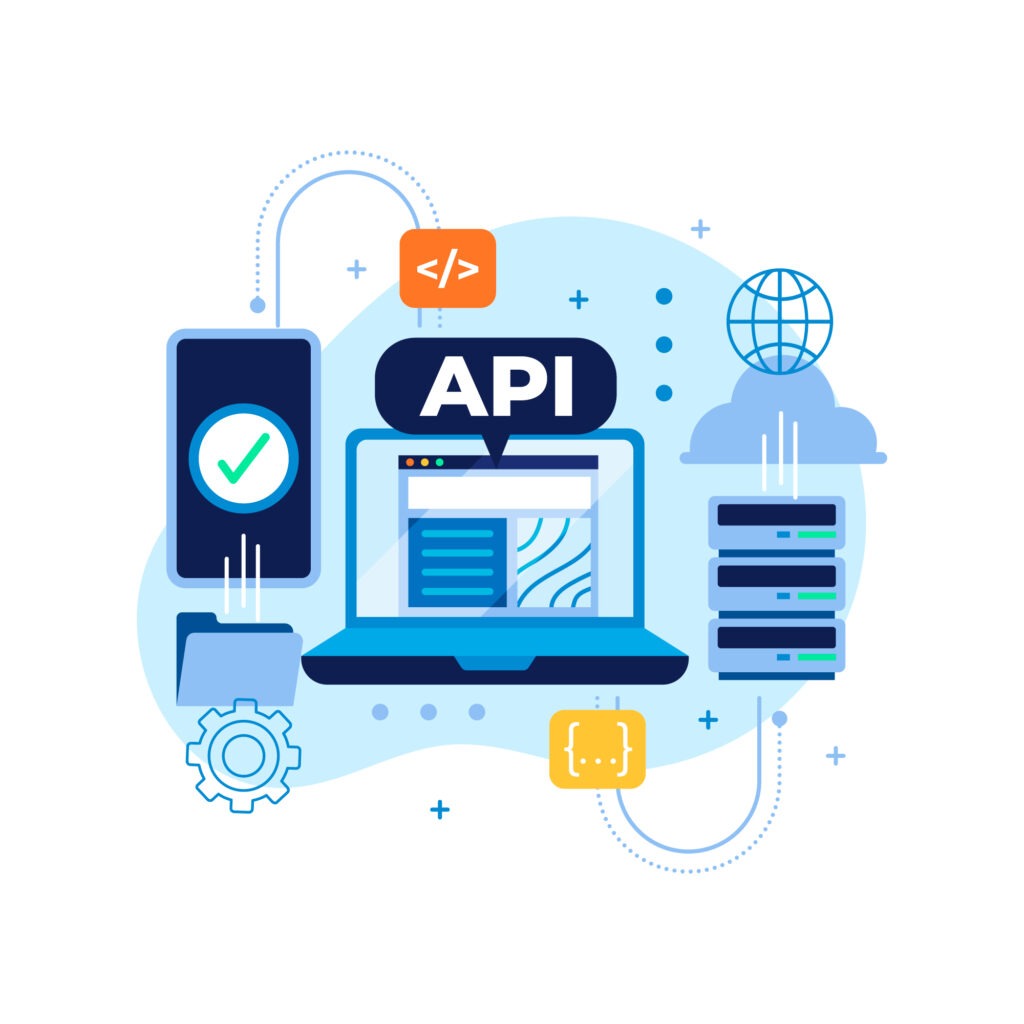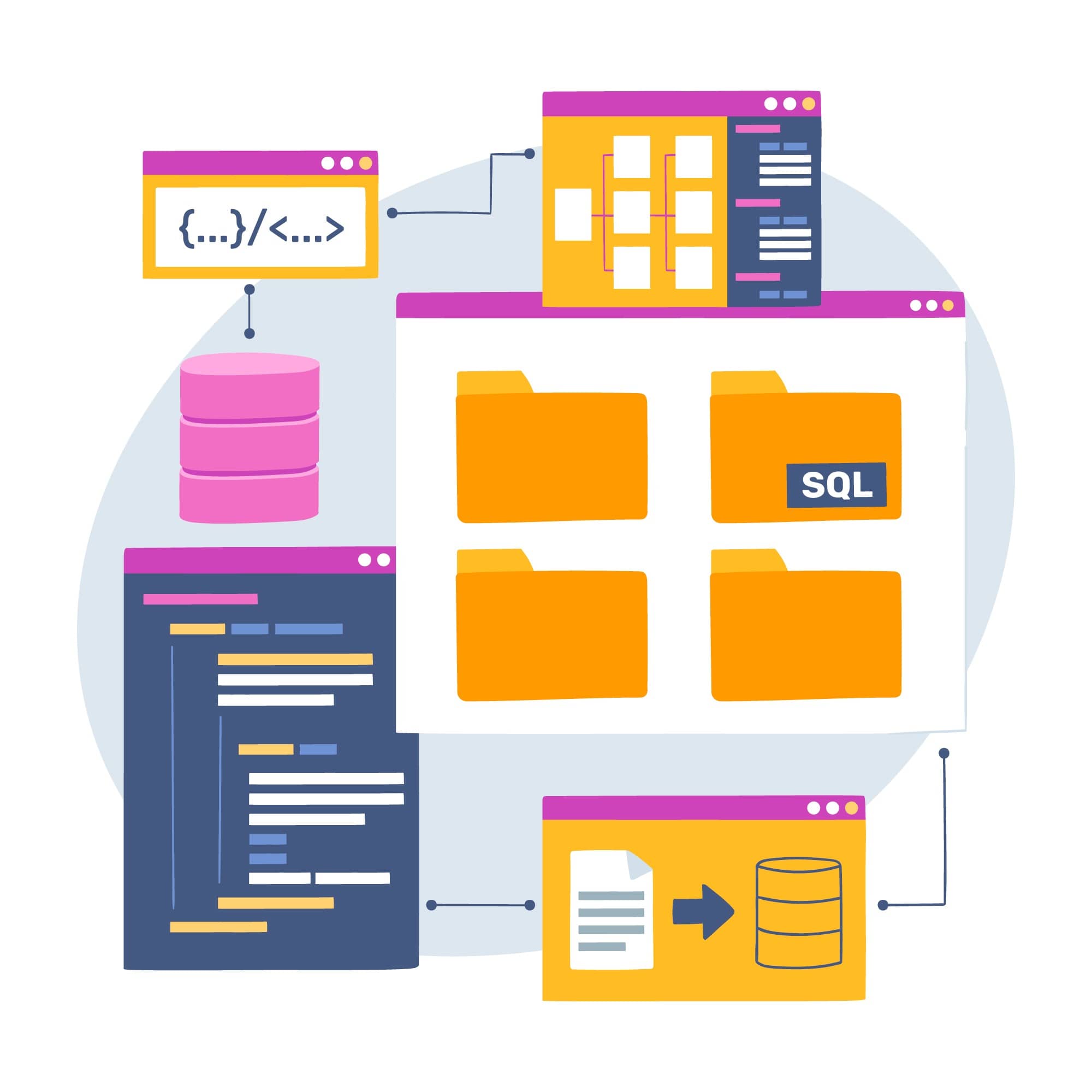When an application lacks a robust architecture, it opens the door to a multitude of challenges that can significantly impact its performance, scalability, and overall maintainability. Specifically, the use of inefficient algorithms and poorly selected data structures results in sluggish performance and resource-intensive operations, negatively affecting the user experience.
The absence of optimisation further compounds these issues, potentially leading to excessive consumption of resources. Scaling becomes a formidable obstacle, with a poorly designed architecture struggling to handle a growing user base or increased data loads.
At Mallow, we specialise in crafting high-performance Laravel applications as a leading custom software development company. Our expert team excels in designing efficient architectures, selecting optimal data structures, and implementing optimisation strategies to ensure stellar application performance. We prioritise optimisation strategies to address potential bottlenecks and enhance overall efficiency. With a focus on scalability, we employ best practices to future-proof applications for growing user bases and data loads.
After reading this article you will gain valuable insights into the best practices that are essential for crafting a robust and efficient Laravel application. You will explore the nuances of Laravel’s architecture, shedding light on its significance in designing scalable and maintainable solutions with efficient architectural solutions. Upon completing this article, you will possess a thorough grasp of critical best practices for architecting Laravel applications. Gain insights into effective design principles, optimal data structure choices, performance optimisation strategies, and scalability considerations.
What should you examine before architecting your Laravel application?
Understanding project requirements

Before embarking on the architectural journey of a Laravel application, it’s crucial to conduct a comprehensive analysis of your project goals and objectives. Define what your application seeks to achieve, what core functionalities it must deliver, and landing on the non-functional requirements that define its performance, scalability, and user experience expectations.
Identifying these aspects lays the foundation for an architecture that aligns seamlessly with the unique needs of your project. This process goes beyond a mere checklist; it involves a nuanced understanding of how Laravel features can be strategically employed to meet and exceed project requirements. In essence, the careful examination of project requirements not only informs the architectural decisions but also ensures that the resulting Laravel application is purpose-built to deliver optimal performance and user satisfaction.
Understanding project requirements is pivotal for businesses as it forms the bedrock of a purpose-built Laravel application. Through a comprehensive analysis, businesses ensure that the architectural decisions align seamlessly with their goals, delivering optimal performance and ensuring user satisfaction.
Typically your action items for this would involve:
- Define project goals and objectives – Clearly articulate the overarching goals and specific objectives of the Laravel application.
- Identify core functionalities- List and prioritise the essential features and functionalities the application must provide.
- Discern non-functional requirements – Determine performance expectations, scalability needs, security considerations, and other non-functional requirements. Conduct a thorough analysis of user needs, expectations, and potential challenges.
- Technology stack alignment – Assess and align the chosen Laravel technology stack with the project’s technical requirements.
- Compliance and regulations – Identify any legal or regulatory constraints that may impact the application’s development and operation.
- User experience (UX) design guidelines – Outline UX design principles and requirements to ensure a positive and intuitive user interface.
- Integration points identification – Identify external systems or services that the Laravel application needs to integrate with.
- Prioritisation of features – Prioritise features based on their importance and impact on achieving project goals.
- Feedback mechanism – Establish a feedback mechanism to continuously gather insights from stakeholders and end-users throughout the development process.
Database design and modeling

The process of architecting your Laravel application involves a careful approach to choosing the most suitable database management system tailored to the specific needs of the application. This selection process considers factors such as data complexity, scalability requirements, a well-structured database schema (outlining the organisation and relationships between different data entities), and the nature of interactions with the database.
Laravel’s robust migration system comes into play here, facilitating seamless updates to the database schema over time. This ensures that the database evolves in tandem with the application’s development, allowing for flexibility and adaptability.
Recognising the significance of database design and modelling is crucial in Laravel application architecture, guiding the selection of an optimal database management system. It ensures alignment with the application’s specific needs, considering factors like data complexity and scalability, while leveraging Laravel’s migration system for flexible and adaptive database evolution.
The action items for this generally encompass:
- Assess the complexity of the data to determine the most suitable database model (relational, NoSQL, etc.).
- Evaluate and choose the appropriate database management system (e.g., MySQL, PostgreSQL, NoSQL databases like MongoDB) based on application requirements.
- Anticipate future data growth and ensure the chosen database system can scale to meet evolving needs.
- Apply normalisation principles to optimise data organisation, and consider denormalisation where performance gains are essential.
- Define the database schema, specifying tables, fields, and relationships between entities. Develop an indexing strategy to enhance query performance based on anticipated data retrieval patterns.
- Implement mechanisms for data validation and enforce data integrity through constraints and rules.
- Address concurrent access issues by implementing appropriate concurrency control mechanisms.
- Define and implement security measures, including access controls and encryption, to safeguard sensitive data.
- Establish a robust backup and recovery plan to mitigate the risk of data loss.
- Leverage Laravel migrations to manage and version-control database schema changes efficiently.
- Develop a strategy for seeding initial data during application setup and testing.
- Explore and implement caching strategies to optimise frequently accessed data and reduce database load.
- Consider the use of replicas for read-only/heavy operations.
Scalability considerations
Scalability considerations involve foresight into future scalability requirements, anticipating the potential growth of user bases and increasing data loads. Horizontal scaling, achieved through load balancing and distributing application instances across multiple servers, ensures seamless expansion as user demand grows. Cloudflare notes that load balancing across multiple servers can improve both scalability and resilience, protecting applications from traffic spikes and failures. Vertical scaling, on the other hand, involves enhancing the capabilities of individual server instances to handle increased workloads.
Performance optimisation becomes a focal point in scalability considerations, particularly in scenarios of high traffic. By fine-tuning Laravel applications for efficient resource utilisation, architects can guarantee optimal performance even during peak usage periods.
From a business perspective, investing time in scalability planning is a strategic move that not only enhances the user experience but also prepares the application to capitalise on growth opportunities. Scalability ensures that the Laravel application can seamlessly evolve with the business, accommodating increased demands and securing a competitive edge in the ever-expanding digital landscape.
Comprehending scalability considerations is imperative in Laravel application architecture, as it involves foresight into future demands, accommodating user base growth and escalating data loads. This strategic understanding not only ensures optimal performance during peak periods but positions the application for sustained business growth, securing a competitive advantage in the dynamic digital landscape.
Typically, the tasks associated with this key aspect include:
- Assess current and future scalability needs based on anticipated user growth and increased data loads.
- Explore and implement strategies for horizontal scaling, such as load balancing and distributing application instances across multiple servers.
- Evaluate options for vertical scaling, enhancing the capabilities of individual server instances to handle increased workloads.
- Conduct performance optimisation measures to ensure efficient resource utilisation and responsiveness, particularly in high-traffic scenarios.
- Perform rigorous load testing to simulate various usage scenarios and identify potential bottlenecks under heavy traffic.
- Set up comprehensive monitoring and alerting systems to promptly detect performance issues and scalability thresholds.
- Implement auto-scaling mechanisms that dynamically adjust resources based on real-time demand, optimising cost-efficiency.
- Evaluate and plan for scalability in the database layer, considering data sharding, replication, or partitioning strategies.
- Integrate CDN services to distribute static assets geographically, reducing server load and improving content delivery speed.
- Consider adopting a stateless architecture where possible, simplifying horizontal scaling by removing session state dependencies.
- Develop strategies for failure recovery to ensure resilience in the face of unexpected scalability challenges.
- Evaluate the business impact of scalability considerations, recognising how a scalable Laravel application contributes to long-term growth and competitiveness.
Security measures

Here, you will be focusing on leveraging built-in security features within the Laravel framework, and addressing critical considerations in data encryption, authentication, and authorisation.
Laravel, known for its commitment to security, provides a solid foundation for safeguarding applications against potential threats. It is imperative to adopt security best practices during the architectural phase, including input validation, output sanitisation, and protection against common vulnerabilities like SQL injection and cross-site scripting (XSS). OWASP’s Top Ten Project remains the industry standard guideline for understanding and mitigating common web application security risks. Laravel’s built-in security features, such as CSRF protection and hashed passwords, offer an additional layer of defense.
Moreover, architects must carefully consider data encryption methods, ensuring sensitive information remains confidential. Robust authentication mechanisms, including multi-factor authentication, and finely-tuned authorisation protocols contribute to safeguarding user data and system resources. From a business perspective, investing in comprehensive security measures not only protects sensitive data and user privacy but also cultivates trust.
A secure Laravel application not only meets compliance requirements but also shields the business from reputational damage and financial losses associated with security breaches.
In an era where data breaches are a significant concern, the integration of thorough security measures becomes a cornerstone in building a resilient and trustworthy Laravel application. Check out this article on common security pitfalls from which you need to protect your Laravel application for more insights.
API design and documentation

The first consideration involves designing a robust API structure that aligns with industry best practices, ensuring clarity, consistency, and scalability. Laravel’s API resources come to the forefront in this phase, providing a powerful tool for transforming and presenting data in a format tailored to the needs of the API consumers.
Beyond the design, generating clear and concise API documentation is equally crucial. Documentation serves as a guiding beacon, offering insights into endpoints, request/response formats, and authentication mechanisms. From a business perspective, a well-designed and thoroughly documented API streamlines collaboration with external developers, third-party services, and facilitates the creation of integrations. This not only enhances the versatility of the Laravel application but also positions the business as an attractive collaborator in the digital ecosystem.
In a place where interoperability and connectivity are important, an emphasis on API design and documentation proves to be a strategic investment for businesses seeking to thrive in a digitally interconnected world.
Testing strategies

Emphasising the adoption of unit testing and Test-Driven Development (TDD) practices is essential. Unit testing ensures that individual components of the application function as intended, contributing to the overall robustness of the codebase. TDD takes this a step further by advocating for writing tests before code, fostering a proactive approach to quality assurance.
Laravel offers a suite of testing tools (like PHPUnit and Pest) that, when judiciously employed, provides comprehensive code coverage, scrutinising various aspects of the application’s functionality. The importance of automated testing and Test-Driven Development (TDD) is extensively covered by Martin Fowler, highlighting how these methodologies lead to more reliable and maintainable codebases.This not only identifies potential bugs and errors early in the development cycle but also serves as a safeguard against regressions during future updates.
Ensuring the reliability and stability of the application through thorough testing is not merely a technical necessity but a strategic business imperative. Rigorous testing reduces the likelihood of post-deployment issues, enhancing the overall user experience and customer satisfaction. It contributes to faster development cycles by catching and resolving issues early, ultimately optimising the development process.
From a business perspective, a well-tested Laravel application not only instills confidence in stakeholders but also minimises the cost of addressing issues post-production, thus providing long-term value and sustainability.
In a competitive digital landscape, robust testing strategies stand as a key differentiator, underscoring a commitment to delivering high-quality, reliable software. Check out this article on essential testing methodologies to include for your application, for more insights.
Continuous integration and deployment

The deployment process, automated through CI/CD pipelines, ensures a reliable and consistent release workflow, minimising the potential for human errors and speeding up the time to market. Industry leaders like GitLab emphasize that CI/CD pipelines not only enhance deployment speed but also improve software quality and team collaboration. From a business perspective, the benefits of integrating Laravel applications with CI/CD are multifaceted. The result is a more reliable and stable application that can adapt swiftly to evolving user needs and market demands.
In a fast-paced digital landscape, the strategic adoption of CI/CD in Laravel application architecture proves to be a key driver in delivering resilient, high-performance software that aligns with business objectives and customer expectations.
Monitoring and error tracking
Laravel provides a comprehensive error-tracking mechanism that ensures all deviations from the expected behaviour are promptly detected and recorded. Real-time monitoring facilitates proactive responses to performance bottlenecks, ensuring optimal user experiences. Some commonly used monitoring and error tracking tools include Bugsnag, Rollbar, Sentry, Raygun, Newrellic, etc.
From a business perspective, investing in monitoring and error tracking not only enhances the application’s reliability and stability but also contributes to a more streamlined and efficient development process. By swiftly identifying and addressing issues, developers can minimise downtimes, mitigate the impact on users, and maintain a positive brand image.
The insights gained from monitoring and error tracking serve as valuable feedback for ongoing improvements, aligning the application with evolving business requirements and user expectations.
In a digital landscape where user satisfaction and application reliability are paramount, the strategic integration of monitoring and error tracking in Laravel application architecture proves to be an investment that pays dividends in terms of user trust and overall business success.
Best practices to future-proof your Laravel applications
✅ Regularly update your Laravel application to the latest stable version to benefit from new features, improvements, and security patches.
✅ Adhere to semantic versioning principles when managing dependencies and libraries to prevent compatibility issues.
✅ Design the application with a modular structure to facilitate easier updates, additions, and replacements of components.
✅ Leverage Laravel packages for common functionalities to benefit from community contributions, updates, and maintenance.
✅ Implement thorough testing practices, including unit tests, integration tests, and end-to-end tests, to catch issues early and ensure reliability.
✅ Implement effective caching strategies to enhance performance and reduce the load on the database.
✅ Set up Continuous Integration and Deployment pipelines to automate testing and deployment processes, ensuring a consistent and efficient workflow.
✅ Implement queues for background processing to enhance application responsiveness and scalability.
✅ Evaluate the suitability of a microservices architecture for the application to enhance scalability and maintainability.
✅ Design APIs early in the development process to support future integrations and external collaborations.
✅ Regularly conduct security audits to identify and address vulnerabilities, ensuring the application remains secure over time.
✅ Stay updated on Laravel and industry trends, emerging technologies, and best practices to make informed decisions about future enhancements and updates.
How should I host my Laravel application?
By now, you’ve gained a comprehensive understanding of the critical considerations when planning the architecture of your Laravel application. Each key area has been explored in detail, outlining the specific action items within each domain to guide you toward the optimal performance of a well-architected application.
As the next step in your journey, it’s essential to delve into the strategies involved in hosting your Laravel application. Explore the insights provided in the article on hosting your Laravel application to uncover key strategies that should not be overlooked in your hosting plans.
Still, unsure about from where you need to take your next step? Feel free to reach out to our team.
Your queries, our answers
Yes, we can continue developing your existing Laravel application. Please provide the current project details so we can assess and proceed. For more details, get in touch with our team.
No, we focus on custom Laravel solutions tailored specifically to your needs. We do not offer pre-built, off-the-shelf products.
Yes, we develop Laravel applications for various domains, including e-commerce, healthcare, finance, and more.
The cost varies based on the project's complexity and scope. For a basic MVP, costs generally range from $20,000 to $40,000 for web apps and $10,000 to $25,000 for mobile apps. For more advanced applications, costs can be higher. We offer a detailed cost breakdown tailored to your specific needs. To know more, check out our article on How much does it cost to work on a Laravel project with Mallow? and discover how we can build a strong partnership together.
The timeline depends on the project's complexity. A basic project may take a few weeks, while more complex applications could take several months.
Yes, we can align our working hours with your time zone to facilitate effective communication throughout the development process. For more details on how you can handle timezone differences efficiently, do check out our article on how to handle timezone differences while working with an offshore development team.
Mallow offers the following outsourcing models: Project-based outsourcing, Staff augmentation, & Dedicated development team (DDT)
Yes, we offer maintenance and support services to ensure your Laravel application remains up-to-date and functional.
Yes, you will own the intellectual property rights of your Laravel application upon project completion. Check out our article on why owning intellectual property rights while outsourcing your application is important.
The cost is influenced by several factors including the complexity of the project, the number of features required, and whether the application is for web or mobile. We provide a personalized estimate based on your project details.
We work with the latest stable versions of Laravel and can also support older versions if needed based on your project requirements. For more details check out our article on Laravel upgrade: when and how to transition to the latest version
Yes, we offer post-deployment support to address any issues and provide updates as needed.
To hire a Laravel developer from Mallow, you can contact us with your project requirements. We'll discuss your needs, suggest suitable developers or teams, and provide you with a proposal. Once the terms are agreed upon, we can start the development process.
Yes, you can hire a dedicated Laravel developer or a team of developers from Mallow. This allows you to have a dedicated resource working exclusively on your project, providing more control and flexibility over the development process.
To hire the right laravel developer for your project, check out this article on tips to hire the right Laravel developer.
Author
Anandhan
Anandhan is a passionate technical lead at Mallow, where he plays a crucial role in driving innovation and overseeing the development of cutting-edge solutions. With a wealth of experience in the field of technology, he consistently strives to elevate his team's performance and deliver exceptional results. His multifaceted interests inspire him to approach challenges with creativity and an open mind, leading to innovative solutions that transcend conventional boundaries. Beyond his professional endeavours, Anandhan nurtures a love for literature and cinema. During his free time, you'll often find him engrossed in the pages of books across various genres, exploring diverse narratives and gaining insights from authors around the world.



